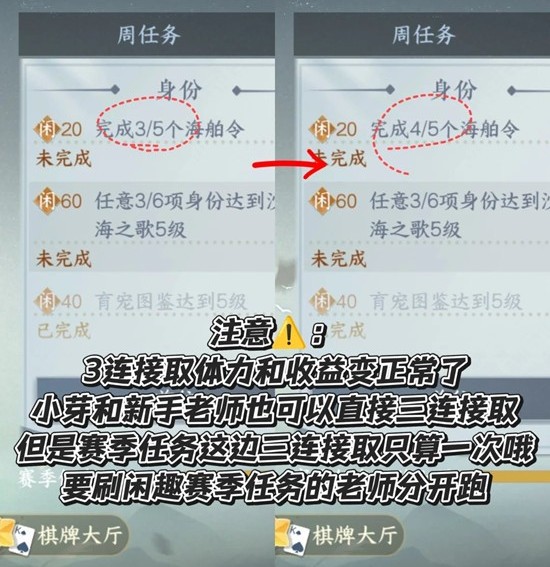Shining a Light on LAMP
时间:2006-03-23 来源:jiahaolin
This document is from developer.com
Author:Peter Yared
url:http://www.developer.com/lang/php/article.php/3560296
Shining a Light on LAMP
By
Peter Yared
Shining a Light on LAMP
Welcome to LAMP 101. Two years ago, the general IT population still
didn't know exactly what LAMP was; it was a well-kept "hobby" in the
dark corners of enterprise development. Although it still hasn't
reached the height of cocktail conversation, LAMP has come a long way,
building momentum among developers and reaching the ears of C-level
executives and boardrooms of some of the world's leading organizations
as they consider the bottom line: Can LAMP deliver a more flexible,
low-cost environment?
LAMP has arrived. Whether you're already curious or still in the dark, the enterprise, maybe even your CIO, is starting to take a serious look at LAMP's benefits, and here are the basics that every developer needs to know.
What Is LAMP?
LAMP is an acronym used to describe an increasingly popular software stack, composed of widely-accepted open source projects:
Although the components of the LAMP stack were never designed to
work together, they have been used for years by an increasing number of
developers to create numerous Web sites. The LAMP components are widely
distributed and adopted, included at virtually every ISP and bundled
with most Linux distributions, including Red Hat and SuSe.
According to Wikipedia, the term LAMP was first used in the late
nineties, by Michael Kunze in an article for a German computing
magazine. In Kunze's coining of the term, the "P" in LAMP stood for
PHP. In practice, however, this letter has come to stand for any of the
three scripting languages: PHP, Perl, or Python. Scripting languages
are ideally suited for Web site development because they are easy to
learn and highly oriented towards processing text. PHP, Perl, and
Python have evolved into full-fledged languages over the past few years.
It's not just the "P" in LAMP that has expanded to include multiple
meanings. In fact, LAMP has become a somewhat amorphous term, because
various components are often arbitrarily swapped out, such as BSD
instead of Linux (BAMP), Postgres instead of MySQL (LAPP), and so on.
Today, "LAMP" is sometimes used as an umbrella term, representing open
source software stacks that are pieced together, as distinct from
homogeneous vendor stacks like J2EE or .NET.
Who Is Using LAMP?
In the past, LAMP, whether as a whole or as mix-and-match
components, was primarily used by large, massively scalable Web sites
such as Amazon, Google, Yahoo, and Friendster. Now, LAMP is seeing
increasing adoption from enterprise customers, particularly for Wiki
and content management solutions. Furthermore, large transactional LAMP
applications are already deployed at major companies including
Lufthansa, Sabre (Travelocity), Boeing, and Disney.
LAMP components are used more and more widely on their own, as well
as in LAMP installations. In just the past year, IBM and Oracle
endorsed PHP, Sun announced integration of PHP and Java, and Microsoft
included Python as a CLR language. Linux is perhaps the biggest success
story among the LAMP components, but the usage of PHP has also grown
dramatically over the past five years, as shown in the following chart.
Figure 1: PHP Usage on the Rise 2000-2005
This broad vendor support, growing attention from the news media,
and the increasing number of major enterprises running LAMP, are all
clear indicators that LAMP has emerged as a lasting platform that is
fast becoming a peer to J2EE and .NET.
How does LAMP Work?
LAMP is singularly focused towards Web applications. The
architecture is very straightforward, as illustrated in Figure 1. Linux
forwards HTTP connections to Apache, which serves static content
directly from the Linux kernel. Dynamic pages are forwarded by Apache
to PHP, which runs the PHP code to design the page. Database queries
are sent to MySQL through PHP. Administration is commonly handled
through phpMyAdmin, and every major enterprise management system can
manage Apache and Linux.
Figure 2: LAMP Architecture
There are numerous resources on the Web explaining how to quickly
build a LAMP application. Most developers are productive within hours
of installing the LAMP stack. Linux isn't a necessary standard because
development often occurs on a Windows platform running Apache, MySQL,
and either PHP, Python, or Perl (this configuration is called "WAMP").
Where Is LAMP?
LAMP is composed of several separate open source projects, each with
its own owners, packages, and distributors. Each of the core components
of LAMP has a major commercial or nonprofit foundation behind it:
Because it can be onerous to piece together a LAMP stack, a few
stack vendors have emerged, including: (Disclosure: this includes
ActiveGrid, which provides the LAMP stack underneath its application
server) ActiveGrid, BitRock, SpikeSource, and SourceLabs
Although the projects are each under distinct open source licenses,
the code that a developer writes for his or her applications does not
need to be released as open source. However, if the software contains
modifications to some of the projects (including the Linux kernel and
the MySQL database), those modifications need to be published under the
GPL license.
Why Lamp?
For Web applications, LAMP has been proven faster, cheaper, more
flexible, and easier than any alternative. There is a strong push to
LAMP by vendors ranging from IBM to Oracle to numerous startups—and
these vendors are adding enterprise-grade capabilities and management
to LAMP. There is no question that LAMP is not a passing trend, but now
entering the mainstream as a serious contender to J2EE and .NET. Now
that you know what it is, who uses it and how it works, it's time to
start building a LAMP application yourself! Who knows, you just might
love it.
About the Author
Peter Yared is the founder, CEO, and CTO of ActiveGrid, the
Enterprise LAMP company. Most recently CTO of Sun Microsystems' Liberty
Network Identity initiative, Peter was also CTO of Sun Microsystems'
Application Server Division. Before its acquisition by Sun, Peter
served as CTO of NetDynamics, which pioneered the then-leading J2EE
application server. Earlier, he was founder and CEO of JRad
Technologies, an enterprise Java company acquired by NetDynamics. Peter
is a developer at heart, still actively involved in architecting the
ActiveGrid Application Builder and LAMP Application Server, designed to
simplify the development and deployment of rich Web 2.0 applications.
Contact the author at
[email protected]
.
Author:Peter Yared
url:http://www.developer.com/lang/php/article.php/3560296
Shining a Light on LAMP
By
Peter Yared
Shining a Light on LAMP
Welcome to LAMP 101. Two years ago, the general IT population still
didn't know exactly what LAMP was; it was a well-kept "hobby" in the
dark corners of enterprise development. Although it still hasn't
reached the height of cocktail conversation, LAMP has come a long way,
building momentum among developers and reaching the ears of C-level
executives and boardrooms of some of the world's leading organizations
as they consider the bottom line: Can LAMP deliver a more flexible,
low-cost environment?
LAMP has arrived. Whether you're already curious or still in the dark, the enterprise, maybe even your CIO, is starting to take a serious look at LAMP's benefits, and here are the basics that every developer needs to know.
What Is LAMP?
LAMP is an acronym used to describe an increasingly popular software stack, composed of widely-accepted open source projects:
- L = Linux operating system
- A = Apache web server
- M = MySQL database
- P = PHP/Python/Perl scripting languages
Although the components of the LAMP stack were never designed to
work together, they have been used for years by an increasing number of
developers to create numerous Web sites. The LAMP components are widely
distributed and adopted, included at virtually every ISP and bundled
with most Linux distributions, including Red Hat and SuSe.
According to Wikipedia, the term LAMP was first used in the late
nineties, by Michael Kunze in an article for a German computing
magazine. In Kunze's coining of the term, the "P" in LAMP stood for
PHP. In practice, however, this letter has come to stand for any of the
three scripting languages: PHP, Perl, or Python. Scripting languages
are ideally suited for Web site development because they are easy to
learn and highly oriented towards processing text. PHP, Perl, and
Python have evolved into full-fledged languages over the past few years.
It's not just the "P" in LAMP that has expanded to include multiple
meanings. In fact, LAMP has become a somewhat amorphous term, because
various components are often arbitrarily swapped out, such as BSD
instead of Linux (BAMP), Postgres instead of MySQL (LAPP), and so on.
Today, "LAMP" is sometimes used as an umbrella term, representing open
source software stacks that are pieced together, as distinct from
homogeneous vendor stacks like J2EE or .NET.
Who Is Using LAMP?
In the past, LAMP, whether as a whole or as mix-and-match
components, was primarily used by large, massively scalable Web sites
such as Amazon, Google, Yahoo, and Friendster. Now, LAMP is seeing
increasing adoption from enterprise customers, particularly for Wiki
and content management solutions. Furthermore, large transactional LAMP
applications are already deployed at major companies including
Lufthansa, Sabre (Travelocity), Boeing, and Disney.
LAMP components are used more and more widely on their own, as well
as in LAMP installations. In just the past year, IBM and Oracle
endorsed PHP, Sun announced integration of PHP and Java, and Microsoft
included Python as a CLR language. Linux is perhaps the biggest success
story among the LAMP components, but the usage of PHP has also grown
dramatically over the past five years, as shown in the following chart.
Figure 1: PHP Usage on the Rise 2000-2005
This broad vendor support, growing attention from the news media,
and the increasing number of major enterprises running LAMP, are all
clear indicators that LAMP has emerged as a lasting platform that is
fast becoming a peer to J2EE and .NET.
How does LAMP Work?
LAMP is singularly focused towards Web applications. The
architecture is very straightforward, as illustrated in Figure 1. Linux
forwards HTTP connections to Apache, which serves static content
directly from the Linux kernel. Dynamic pages are forwarded by Apache
to PHP, which runs the PHP code to design the page. Database queries
are sent to MySQL through PHP. Administration is commonly handled
through phpMyAdmin, and every major enterprise management system can
manage Apache and Linux.
Figure 2: LAMP Architecture
There are numerous resources on the Web explaining how to quickly
build a LAMP application. Most developers are productive within hours
of installing the LAMP stack. Linux isn't a necessary standard because
development often occurs on a Windows platform running Apache, MySQL,
and either PHP, Python, or Perl (this configuration is called "WAMP").
Where Is LAMP?
LAMP is composed of several separate open source projects, each with
its own owners, packages, and distributors. Each of the core components
of LAMP has a major commercial or nonprofit foundation behind it:
- Linux: Red Hat, Novell
- Apache: Covalent
- MySQL: MySQL AB
- PHP/Python/Perl: Zend, Python Software Foundation, the Perl Foundation
Because it can be onerous to piece together a LAMP stack, a few
stack vendors have emerged, including: (Disclosure: this includes
ActiveGrid, which provides the LAMP stack underneath its application
server) ActiveGrid, BitRock, SpikeSource, and SourceLabs
Although the projects are each under distinct open source licenses,
the code that a developer writes for his or her applications does not
need to be released as open source. However, if the software contains
modifications to some of the projects (including the Linux kernel and
the MySQL database), those modifications need to be published under the
GPL license.
Why Lamp?
For Web applications, LAMP has been proven faster, cheaper, more
flexible, and easier than any alternative. There is a strong push to
LAMP by vendors ranging from IBM to Oracle to numerous startups—and
these vendors are adding enterprise-grade capabilities and management
to LAMP. There is no question that LAMP is not a passing trend, but now
entering the mainstream as a serious contender to J2EE and .NET. Now
that you know what it is, who uses it and how it works, it's time to
start building a LAMP application yourself! Who knows, you just might
love it.
About the Author
Peter Yared is the founder, CEO, and CTO of ActiveGrid, the
Enterprise LAMP company. Most recently CTO of Sun Microsystems' Liberty
Network Identity initiative, Peter was also CTO of Sun Microsystems'
Application Server Division. Before its acquisition by Sun, Peter
served as CTO of NetDynamics, which pioneered the then-leading J2EE
application server. Earlier, he was founder and CEO of JRad
Technologies, an enterprise Java company acquired by NetDynamics. Peter
is a developer at heart, still actively involved in architecting the
ActiveGrid Application Builder and LAMP Application Server, designed to
simplify the development and deployment of rich Web 2.0 applications.
Contact the author at
[email protected]
.
相关阅读 更多 +










